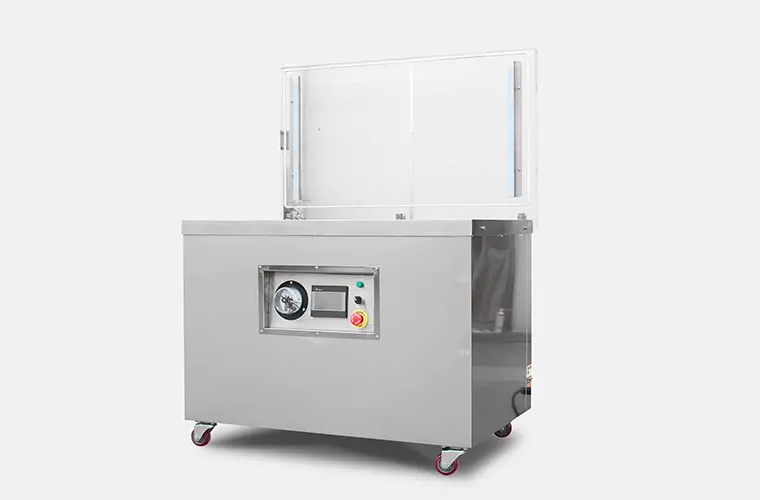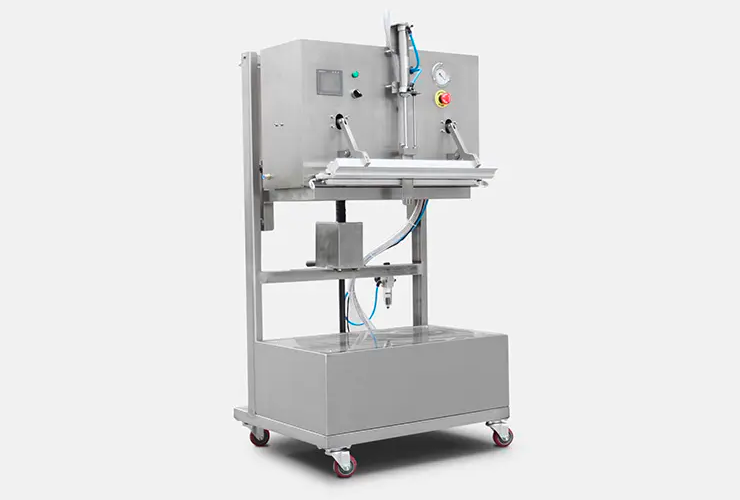Vacuum machines, also known as vacuum sealers or vacuum packaging machines, are innovative, multifunctional devices that have revolutionized the food and packaging industry. These machines utilize advanced technology to remove air from the bag or container and create an airtight seal, thereby extending the shelf life of perishable items and ensuring their freshness for longer.
The core of a vacuum machine consists of a vacuum chamber, sealing strips, powerful pumps and complex control systems. Let’s take a closer look at how these components work together to preserve and protect your valuable products.
The process begins by placing the item to be sealed (whether it is food, important documents, or any other material) into a bag or container. The open end of the bag or container is then carefully placed over the sealing strip, which is responsible for creating a tight seal after the air is extracted. It is crucial to ensure that the bag is properly aligned with the seal to avoid any leaks.
Once the bag or container is in place, the operator starts the machine. When the machine is turned on, the vacuum chamber (also called a vacuum chamber) is sealed shut. The chamber is a secure and enclosed space where the vacuum and sealing process takes place. It is made of durable materials that can withstand the pressure generated during vacuuming.
Once the chamber seal is closed, the vacuum pump begins operating. The pump plays a vital role in removing air from the bag or container. It creates suction by creating a vacuum inside the chamber, creating a lower pressure environment than the outside atmosphere. The pressure difference forces the air inside the bag or container to escape through small holes or special valves.
When air is expelled from around a chamber, bag or container, atmospheric pressure exerts pressure on it, compacting the product and keeping it in its original state. It is worth noting that some vacuum machines offer adjustable vacuum settings, allowing the operator to determine the vacuum level required for different products, ensuring optimal preservation of various items.
Once the required vacuum level is reached, the machine enters the sealing phase. A sealing strip located inside the chamber heats and melts the two ends of the bag together, creating an airtight seal. This seal prevents air and moisture from re-entering the bag, eliminating potential spoilage factors and maintaining the quality of the product. After sealing, the vacuum machine releases the vacuum inside the chamber, allowing the sealed bag or container to be safely removed.
In addition to basic vacuuming and sealing functions, many vacuum machines offer additional features to increase convenience and efficiency. For example, some models feature sensor technology that automatically detects the optimal vacuum and sealing times required for different products, reducing the chance of error. Others may have built-in pressure regulators to precisely control vacuum levels.
Vacuum machines bring huge benefits to various industries such as food packaging, electronics, pharmaceuticals, etc. By removing air and creating a tight seal, these machines significantly extend the shelf life of products, reduce waste and protect items from contamination and damage.
In summary, vacuum machines are excellent devices that utilize cutting-edge technology to ensure the preservation and protection of perishable and valuable items. Their vacuum and sealing capabilities, as well as additional features, make them a valuable asset in numerous industries. Whether you are a food manufacturer, retailer or an individual looking to preserve food or valuables, investing in a vacuum machine can undoubtedly bring significant benefits.
Post time: Nov-15-2023


